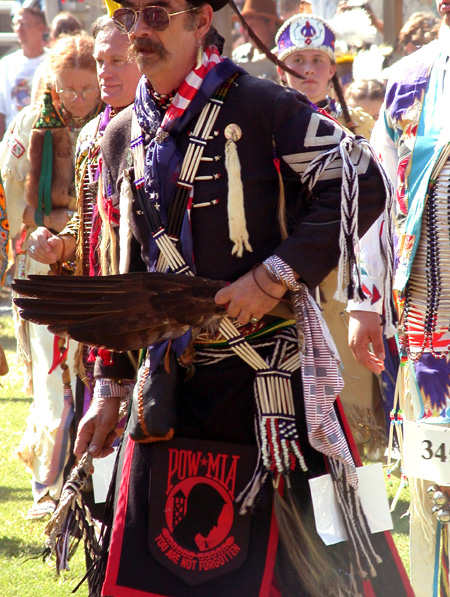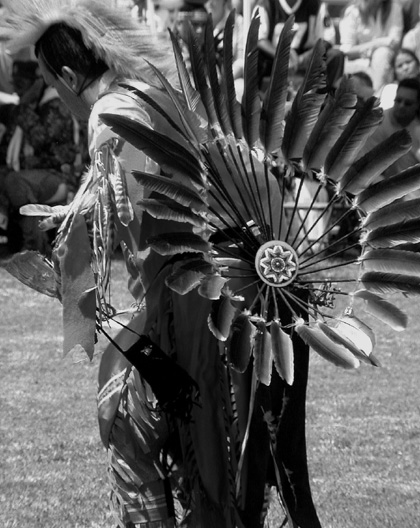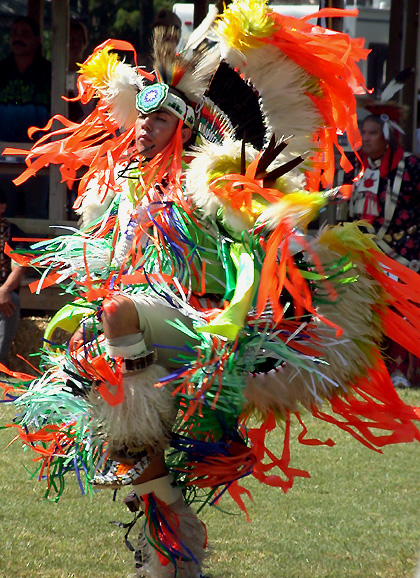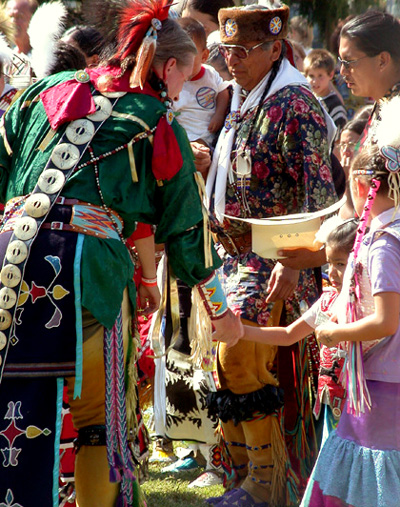Years ago when I was in my 20’s my family received a very cordial letter from a distant cousin who was living in Salt Lake City. She was Mormon and was researching our family’s genealogy and needed some help filling in gaps in our shared ancestry. My Dad answered her questions and sent just as cordial a response back.
My father’s sister, though, was furious. Absolutely livid, which is surprising because she was normally a placid, good-natured woman. She was angry with the letter and with my Dad for responding—not because my Aunt had any problem with that part of the family, but because of the reasons why my distant cousin wanted the information.
As I knew from previous experience living in Salt Lake City, Mormons pursue genealogical research because the Church mandates that members discover past ancestors in order to have them baptized in the church. Baptized, even though they are dead. I thought this practice was a bit unusual, but neither Dad nor I really cared that much; we both felt our Irish ancestors were sleeping too deeply from all that good whisky to worry about a few drops of water in the face. However, our flippant attitude just made my aunt angrier. How dare she, my Aunt stormed to my Dad, impose her religious viewpoints on our ancestors and on us?
When Dad later related her words to me, I thought this was a bit of the pot calling the kettle black. My Aunt was Jehovah’s Witness, and I don’t think there’s a one of us who hasn’t answered the tap at the door and found someone from the Jehovah’s Witness at the other side, hoping that they’ll find a live one.
My Dad and I talked about the situation, and his opinion was that though my Aunt’s church members might knock at doors, when the doors were shut in their faces they didn’t kick them down, sit on the people, and force them to convert. To my Aunt, this is what the Mormon’s post-mortem baptisms were – imposing a religious belief on people who aren’t given a choice whether to say yay or nay.
The thing with both my Aunt and distant cousin is that they both believed in their religions absolutely, surprising when you consider how many different religions there are in the world.
According to the Religious Tolerance web, the largest religious denomination is Christianity, with 33% of the world’s population. The second is Islam, with 20% of the population. What might be a surprise is that the third highest category are those people who have no formal belief – people who are agnostic, humanists, secularists, and so on. Fourth is Hinduism, with 13%, and fifth is Buddism, with 6%. Atheists follow closely at sixth place, with 4% of the population.
(Another site shows that the non-religious and the Hindu’s positions are reversed, but the counts are close to that of the first site.)
The non-religious group for the most part believes that the existence of a God, or Gods for that matter, can’t be proved or disproved. Unlike the theist, with an absolute belief in God or Gods, and unlike the atheist, with an absolute belief that God does not exist, the agnostic says, “Neither of you have proved your point. Until you do, I neither believe there is a God, nor disbelieve there is a God”.
The non-religious are joined by some of the other religions such as Shinto and, to some extent, Buddhism, in that if there is one thing they all share, it’s the lack of an absolute face of God. It’s not surprising, then, to know that it’s unlikely (Buddhist historical quirks aside) for a modern war to be initiated by any follower of the religion, based on the religion. How can you fight for or against something you can’t see clearly?
This is all heading, in a round about manner, to a posting that AKMA wrote today about his “Weblogs and Spiritual Context” session that he’ll have at BloggerCon. He was responding to my expressed qualms at the description, which read:
Not only do bloggers have souls, about which some of them talk more or less often, but religious organizations have —or might be well-served to start — blogs. This session will involve reflections on the ways that blogs share features of the spiritual autobiography, and ways that blogs bespeak spiritual dimensions of our personae; ways that blogs can clarify congregational identity, both for curious observers and for reflective members; and ways that deliberate weblogging can enrich the spiritual lives of both individuals and congregations.
AKMA was right in his response – it was the phrase “Not only do bloggers have souls…” that I found questionable. To this he says:
What I wrote troubled Shelley and some of her readers. Now, in retrospect, I can see how her discomfort coheres with the differences we discovered and explored a week or two ago. Likewise, though, my reasoning reflects my own part in the discussion. I hate to bother Shelley, but I think we’re operating with fundamentally divergent outlooks at this point.
…
Shelley sensed a Christian specificity to that description, and suggested that I more precisely call it ‘Weblogs and their Christian Context.’ I see something to that, and I’m not unwilling to stipulate my Christianity; still, the pivotal claim (according to Shelley’s comment) was that ‘Bloggers have souls,’ and that’s very far from being an exclusively Christian premise.
True, many religions have a variation of ’soul’ if by this we mean our essence existing as spirit beyond our corporeal body. However, it’s not AKMA’s belief that I’m questioning, because I know that he as Christian believes we all have souls – it is the absolute nature of the statement, “bloggers have souls”.
AKMA continued with some specifics about the term, soul:
Plato and Aristotle referred comfortably to people’s souls; at least some, if not many, flavors of Judaism accept the premise that people have souls. The concept is common in Islam. The ‘soul’ appears in the Upanishads, on at least a tentatively plausible reading —and I think I recall that even Buddhism preserves something akin to the notion of a ‘soul,’ even if it ultimately dispenses with that idea. Apart from atheists — about whom more in half a sec — I can’t bring to mind a tradition adherents of which would be likely to take offense at the axiom that ‘people have souls,’ especially if one allows for terminological refinement: You say ‘soul,’ but we call it ‘spirit’ (or ‘mind’ or some other tradition-specific term).
True, I use the word soul to describe a specific person’s mind, their uniqueness, but not soul as it would be used to represent a spirit in an afterlife. The context of the discussion I use the term in usually provides this refinement. From the rest of the description for AKMA’s session, there can be no doubt that he is referring to soul as it is defined within a spiritual context, so we’ll focus on that for this time.
AKMA continues, specifically addressing the atheists:
Atheists, or ‘brights,’ might well be nettled by my starting-point (although it would take a pretty thorough-going atheist to bridle at all the various ways the term ‘soul’ gets deployed, even in secular culture). But it’s going to be hard for me to say anything in public, especially anything pertinent to spirituality, without vexing atheists.
There might be a few people in addition to the atheists who are going to be nonplussed by the phrase “bloggers have souls”. It’s not that most would be uncomfortable with spirituality raised as it relates to weblogging – many would find this to be an enjoyable discussion. No, it’s the absoluteness of the statement, “bloggers have souls” that gives me pause.
My first reaction on reading this was to turn it around, and play out in my mind how people would feel if they read that I was giving a talk titled “Weblogging and Spiritual Context”, and began the description with, “Not only do bloggers have no souls…” I have a feeling that one or two people might protest, not because they don’t respect that I believe differently, but because of the absolute nature of the statement.*
I think of my Aunt, now long dead and whose soul has found whatever resting place it was going to find regardless of her belief or mine. I think of what her reaction would be if she read my words, “Bloggers have no souls”, though she would need reassurance that ‘blogger’ was not some new form of demon. “How dare you”, she’d begin, as she’d tear a strip from my hide for what she would perceive as my imposition of faith, or lack of soul, on her.
Absolutes. I have no problem saying, absolutely, “Bloggers write,” and “Bloggers read,” and “Bloggers have the capability of belief,” but Bloggers have (no) soul, no that one’s not one I can use with any surety, in any sense.
Still, I must remember my ancestors sleeping the sleep of the just dreaming of a dram of good whisky and a nice frolic (if that’s the way this soul thing should work out) and put this all into perspective. Neither AKMA nor myself are my Aunt, and both of us know that there are nuances and understanding, humor as well as flexibility, and above all, context when we speak. I can understand what AKMA is saying when he writes, “Bloggers have souls,” and I hope his session is hugely successful. Those who attend the conference and don’t attend the session are idiots. (Bloggers are idiots…)
*And as I was struggling to write this, I was pinged by Happy Tutor who wrote something to this effect.






